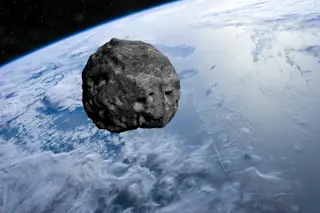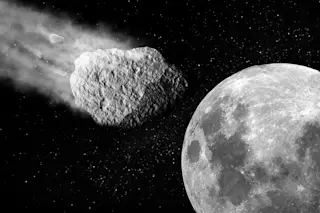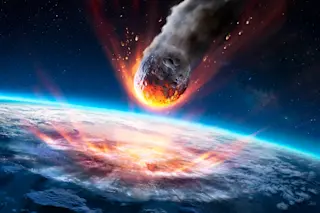Asteroids are pretty easy to miss: they are generally small and dark and they flit about in odd orbits. So astronomers were elated when they realized that the Near Earth Asteroid Rendezvous probe, on its way to a 1999 encounter with the asteroid Eros, would also get a passing glance at a 43-mile-long asteroid called Mathilde. During the 25-minute flyby last June, NEAR snapped pictures of Mathilde’s black surface from a distance of 750 miles. The thing has been battered. It’s really smashed up, says Cornell astronomer James Bell. It’s incredible that it even exists. Five gaping holes, created by giant impacts, dominate one side of Mathilde, and the asteroid is so lightweight, says Bell, that it must be either full of ice (but there’s no sign of water) or a loosely packed pile of rocks held together by their own weak gravity. Those rocks are probably rich in carbon: Mathilde is uniformly blacker than charcoal. The real fun starts in January 1999, when near begins a year in orbit around 25-mile-long Eros, culminating with a crash landing on that asteroid’s surface.
More on Discover
Stay Curious
SubscribeTo The Magazine
Save up to 40% off the cover price when you subscribe to Discover magazine.
Subscribe













